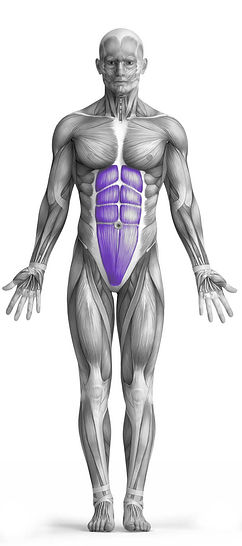Feet Elevated Plank 101 Video Tutorial
0

Exercise Synopsis
Target Muscle Group
Abs
Secondary Targets
Execution
Isolation
Force Type
Static
Required Equipment
Bodyweight
Fitness Level
Beginner
Variations
None
Alternatives
None
Timer
Hour
Minute
Second
Stopwatch
00:00:00:00
Overview
The Feet Elevated Plank is an effective core exercise that primarily targets the abdominal muscles while also engaging the lower back. By elevating the feet on a bench, box, or similar surface, the exercise increases the intensity of the standard plank, requiring more core stabilization to maintain a straight body alignment. The elevated position shifts more emphasis onto the abs, helping to build strength and endurance. Additionally, this exercise helps improve overall posture and strengthens the lower back, making it beneficial for improving core stability and supporting spinal health. All you need for this exercise is your bodyweight and a raised surface.
How to Perform
Begin by setting up your exercise area with a mat on the floor and a bench placed at a right angle to your body.
Position your feet on the bench, ensuring they are firmly planted, and place your forearms on the mat with your elbows aligned directly beneath your shoulders.
Extend your body into a straight line, making sure your back, hips, and legs are aligned to form a proper plank position.
Engage your core, glutes, and legs to maintain stability and avoid letting your hips sag or your shoulders rise.
Hold this elevated plank position for as long as you can while keeping your body in a straight line.
Once you reach your limit, rest for about 1 minute before repeating the exercise.
To increase the challenge, gradually extend your hold time or add additional sets as you build strength.
★ Bonus: For exercises that involve external weights (such as dumbbells, barbells, or machines), the One Rep Max (1RM) calculator can help you estimate your maximum lifting capacity. Use it to track your strength progress and adjust your training for optimal results.
Tips
Maintain a rigid, straight body throughout the exercise, ensuring there’s no bending or dropping of your torso.
Keep your core tight and engaged to prevent your hips from sinking toward the floor.
For an added challenge, try lifting one foot off the bench just a little, which will increase the demand on your core stability.
How Not to Perform
Avoid letting your hips sag: Ensure that your hips stay in line with your shoulders and heels. Sagging can put unnecessary strain on your lower back, increasing the risk of injury.
Do not arch your back: Keep your back flat and straight. Arching your back takes the focus away from your abs and places unnecessary pressure on your spine.
Do not let your shoulders rise towards your ears: Keep your shoulders relaxed and away from your ears to avoid unnecessary tension in your upper body. This will also help to maintain better form and focus on your core.
Do not overexert your core by holding your breath: Breathe steadily throughout the exercise to maintain control and reduce unnecessary strain on your muscles. Holding your breath can increase internal pressure and lead to discomfort or dizziness.
Avoid swinging or moving your body: Keep your body still and stable. Any movement other than slight adjustments for balance will reduce the effectiveness of the exercise and waste energy.
Do not let your feet slide off the bench: Ensure that your feet remain firmly planted on the bench. If they slip, you lose the elevated position, reducing the intensity and the focus on your abs.
Do not look forward or tilt your head up: Keep your neck in a neutral position by looking down at the mat. Tilting your head up can cause strain in your neck and misalign your spine, shifting focus away from the target muscles.
Variations
Variations of fitness exercises refer to different ways of performing a specific exercise or movement to target various muscle groups, intensities, or goals. These variations aim to challenge the body differently, prevent plateaus, and cater to individuals with varying fitness levels.
Alternatives
Alternative exercises in fitness refer to different movements or activities that target similar muscle groups or serve the same training purpose as the primary exercise. These alternative exercises can be used as substitutes when the original exercise is unavailable or challenging to perform due to various reasons such as equipment limitations, injuries, or personal preferences.








